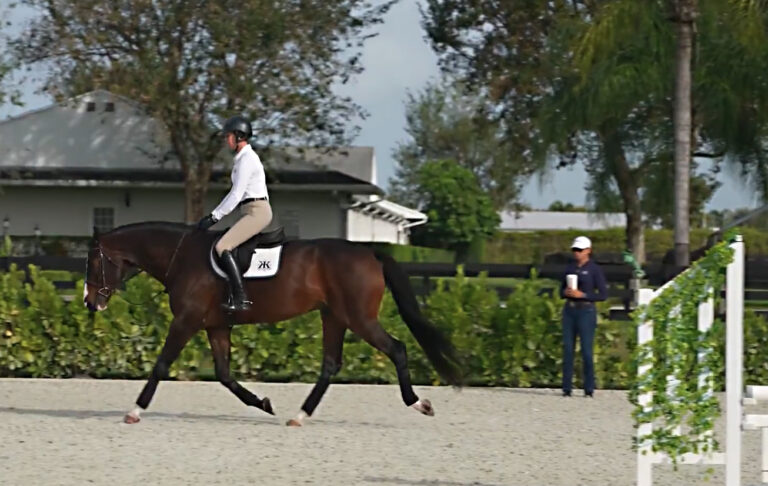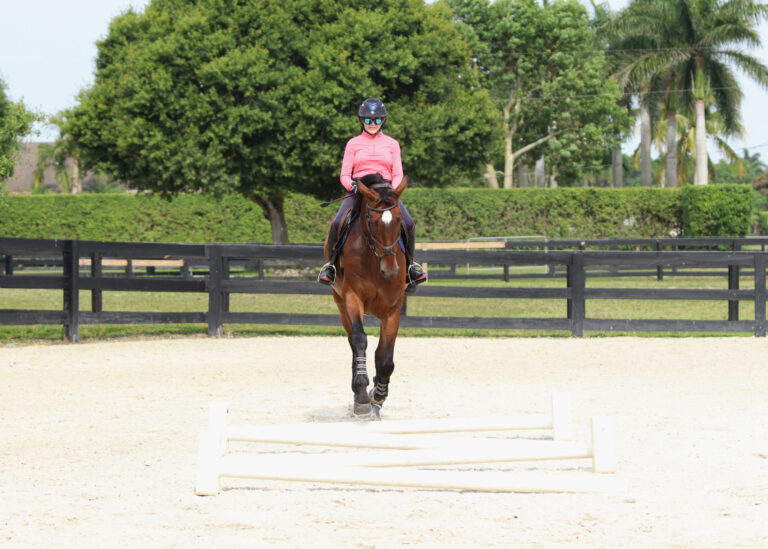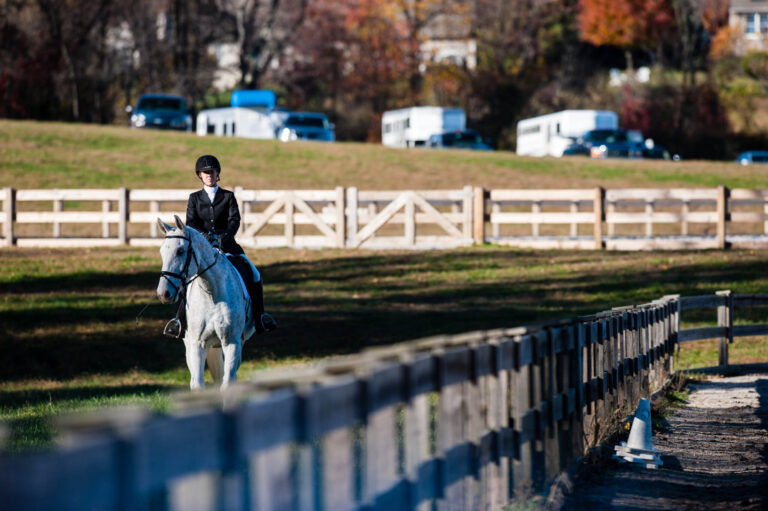Last month, I taught you how to ride forward in a hunter round, jump fences “out of stride” and use focal points to make smooth, accurate turns. This month, you’re going to build on those skills by practicing turning around a jump as you approach your next fence. This will help you stay focused and on track in the show ring when you have to ride around other jumps, decorations or obstacles.
In this month’s second exercise, I will ask you to turn your head while jumping a small grid. This will improve your balance, timing and muscle memory over fences—it’s pretty fun, too! After that, I’ll share some tips for maximizing one aspect of hunter performances that often receives too little attention: the jump recovery. Then, to add a final polish to your round, we’ll discuss how to end it on a note that will impress the judge and leave you with a satisfied feeling of a job well done.
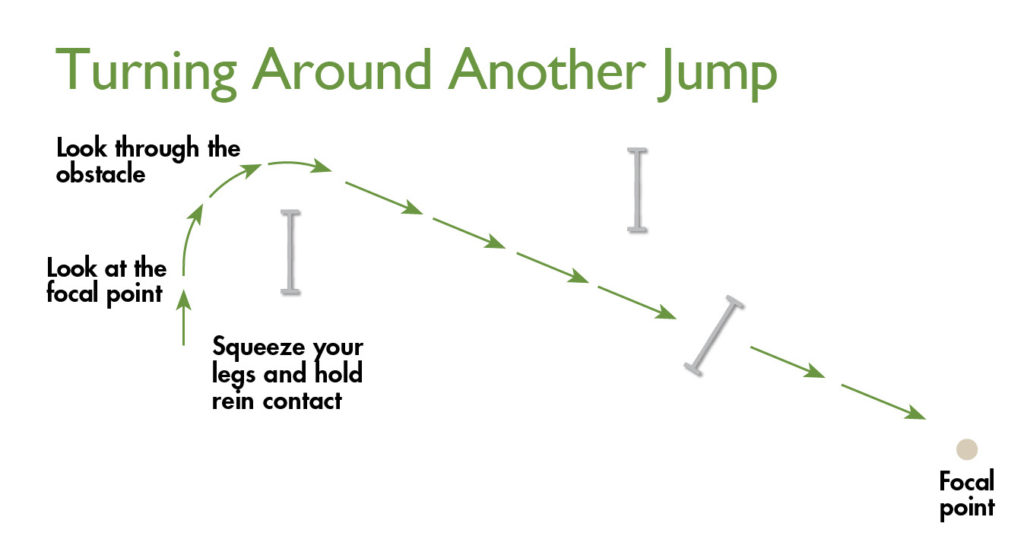
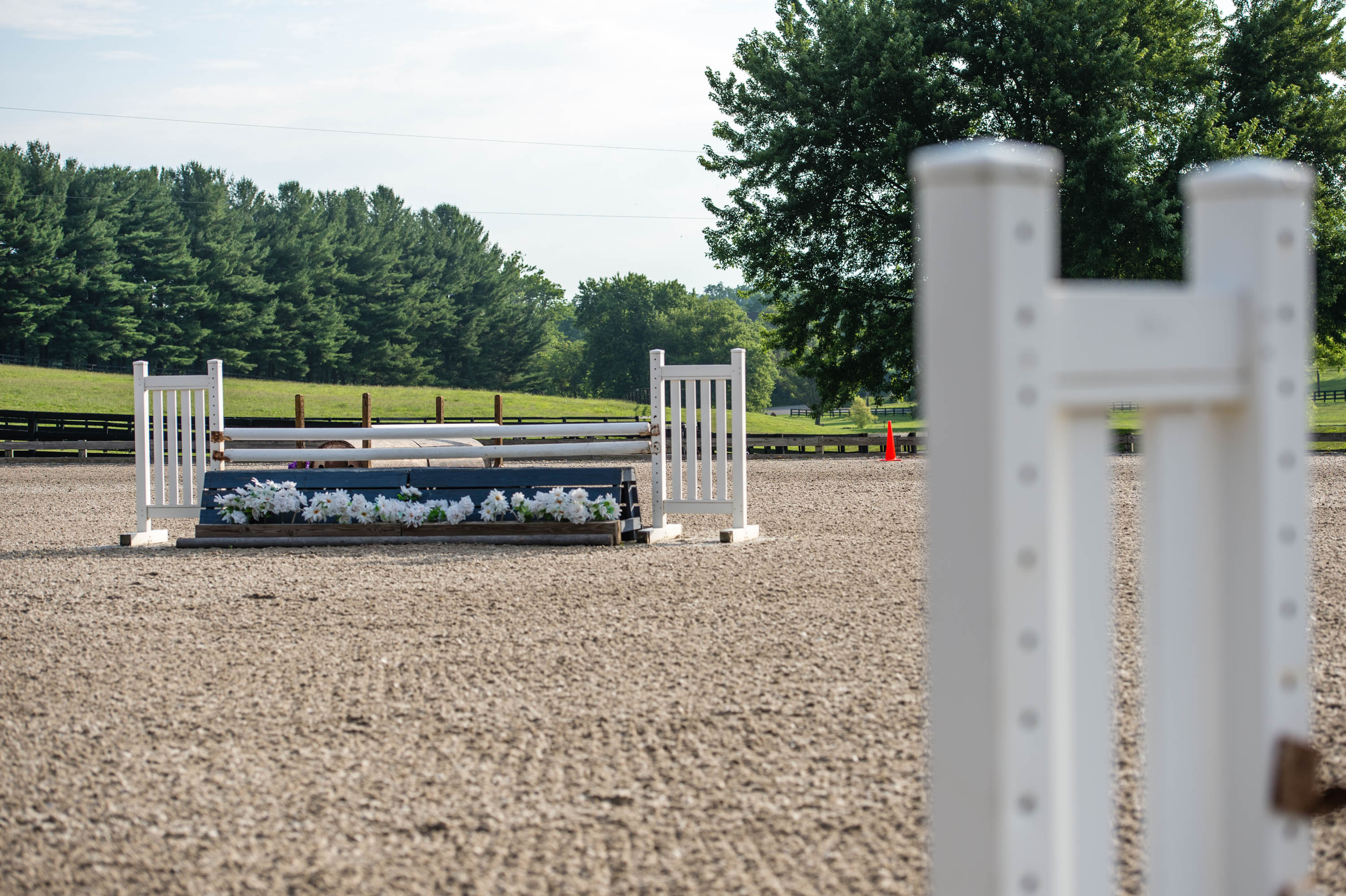


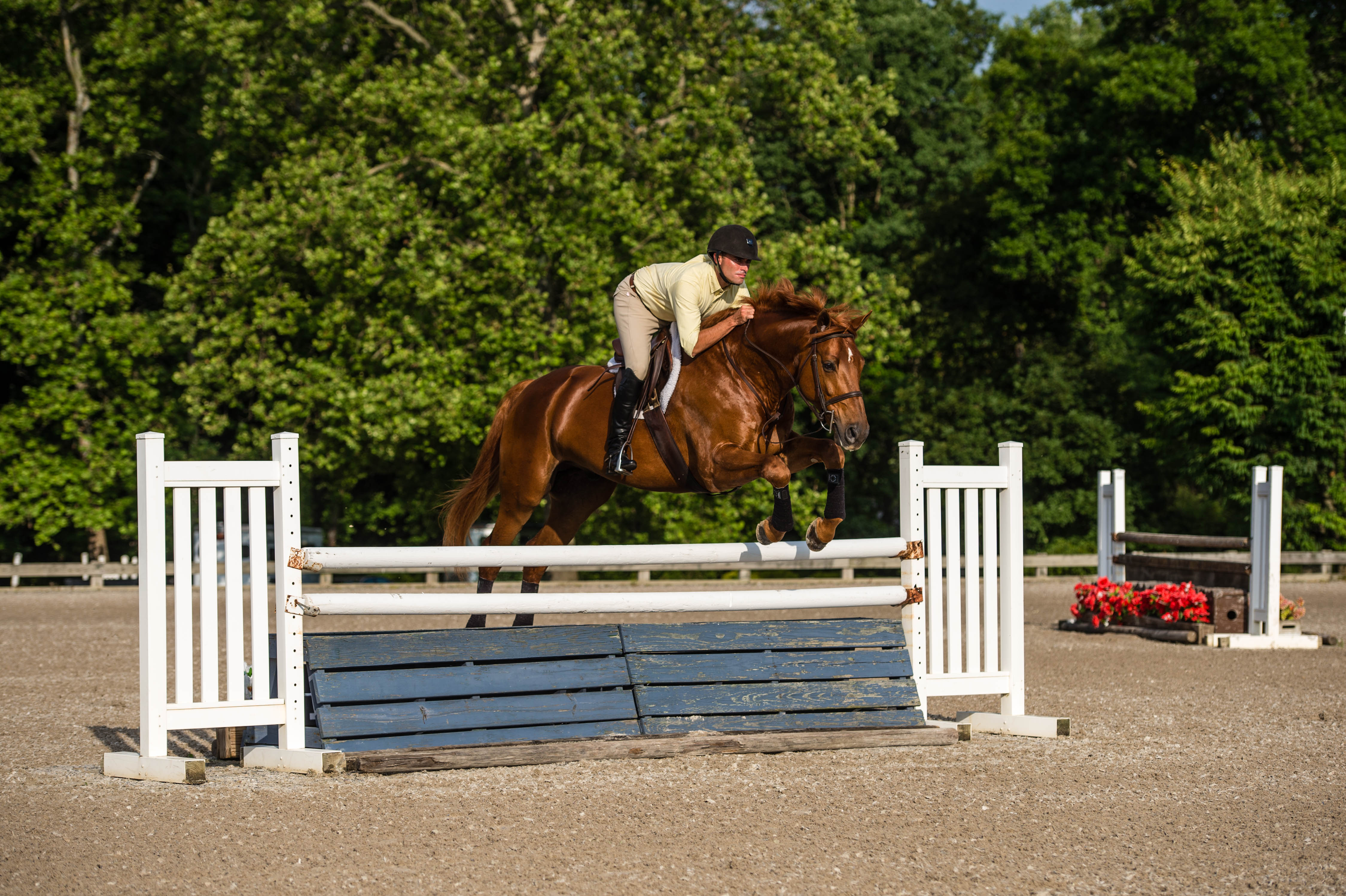
Homework: Grid Exercise
On the long side or the quarterline, build a very simple trot-in gymnastic line that both you and your horse have done before comfortably. For example, you could set up a crossrail to a vertical to an oxer with a trot-placement rail approximately 9 feet away from the crossrail. Build the vertical about 18 feet away from that (for one stride) and the oxer another 36 to 38 feet (for two strides) from the vertical. Adjust all of these distances to suit your horse’s natural stride so that he makes a steady one stride from the crossrail to the vertical and a steady two strides to the oxer.

With all gymnastic schooling, I like to start with a single pole on the ground between each set of standards to check the distances. Then I add one jump at a time, starting with the crossrail, then the vertical and finally the oxer. When you and your horse are jumping through this gymnastic comfortably, ask a friend to stand in the middle of the arena perpendicular to the grid. As you enter the grid, have her hold up a certain number of fingers on one hand. Without changing anything else about your ride, turn your head to focus on her hand and count how many fingers she’s holding up. Keep your eyes focused on her hand until your horse lands from the final jump. By the last obstacle you will almost be looking behind yourself.
Throughout the grid, concentrate on being in the middle of your horse—from front to back and left to right. Feel your body opening and closing naturally over each jump, tuning in to what different parts of your body are doing to stay with his motion.
This exercise packs a lot of punch—some riders are very uncomfortable with it at first and seem to lose control of their own eyes. Initially, they simply cannot get themselves to look at the helper. Over a short time, though, they master the exercise and, in doing so, gain great balance and confidence. This, in turn, gives their horses balance and confidence.
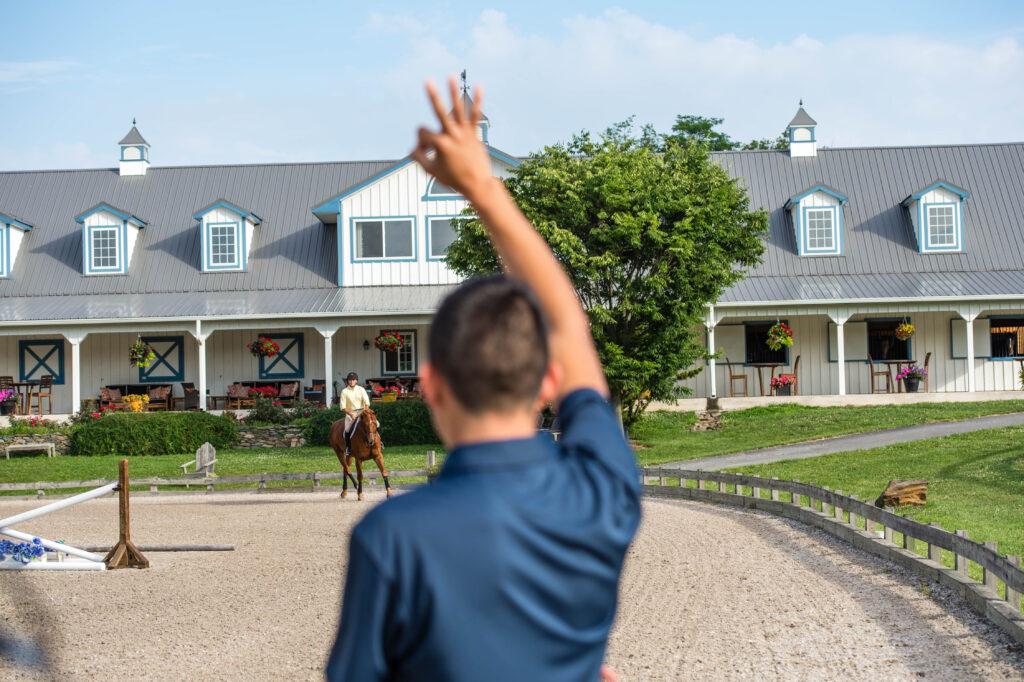

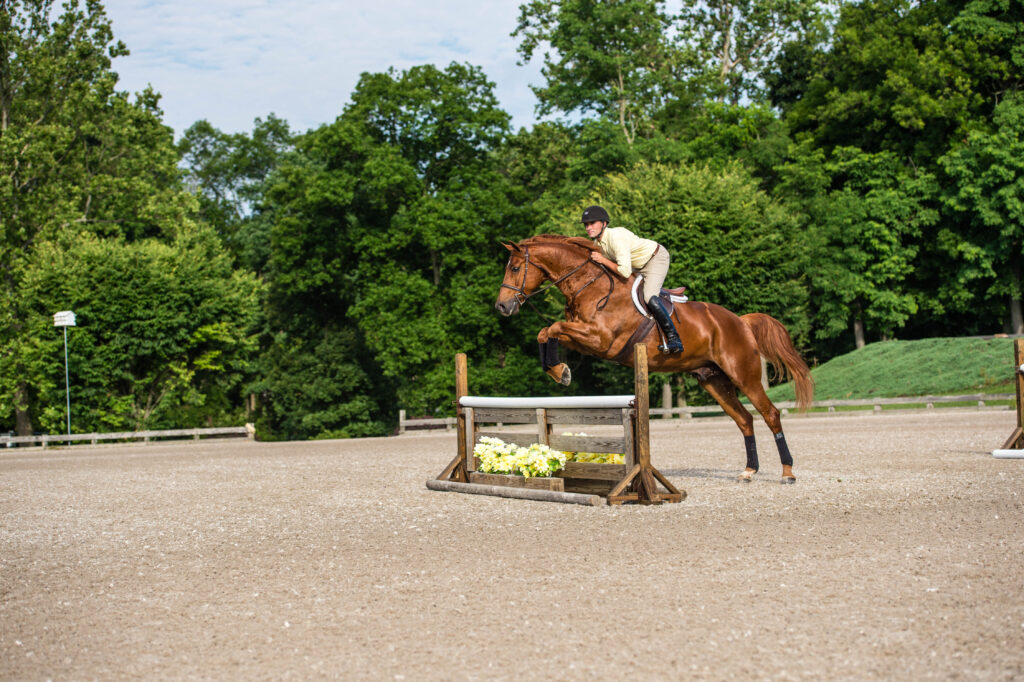
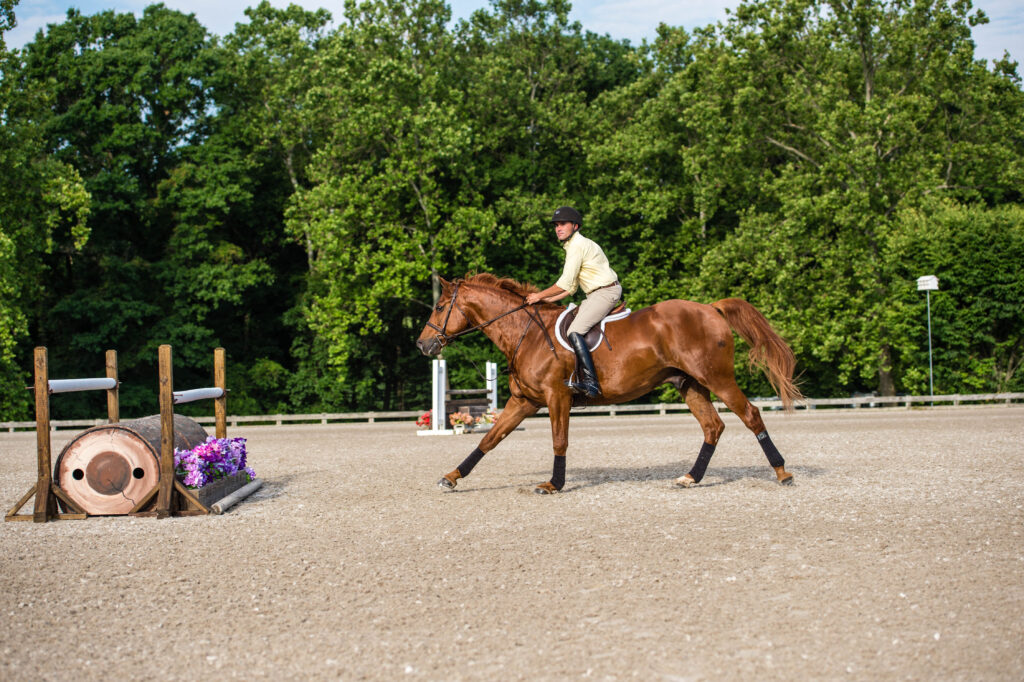
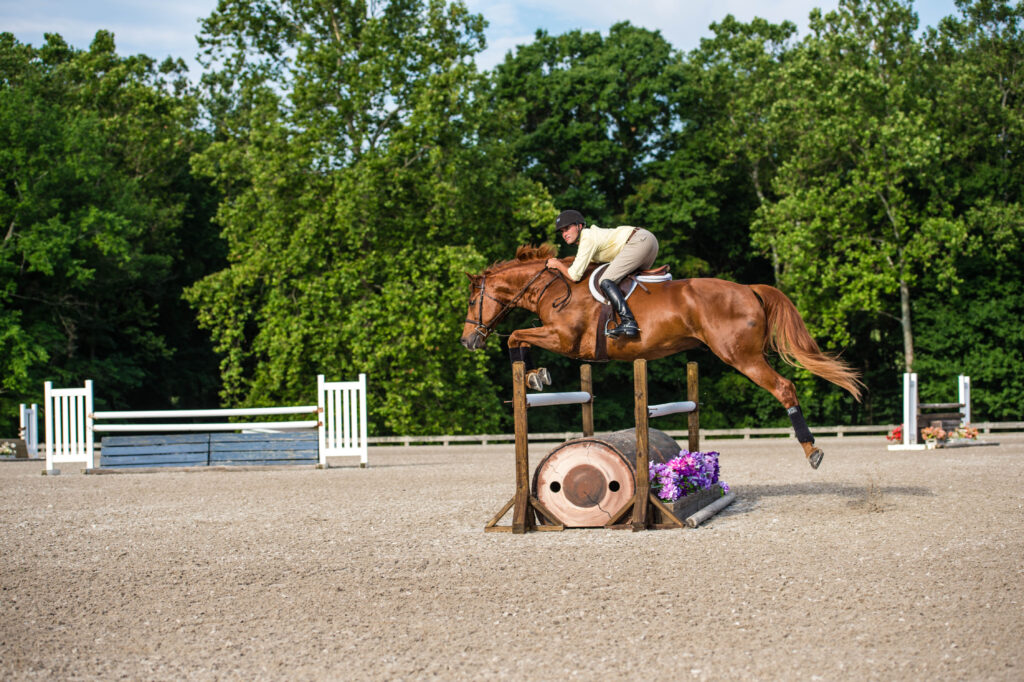
No-Drama Recoveries
In addition to forward, confident approaches, balanced, undisturbed jumping efforts and smooth, steady turns, another element that sets an exceptional hunter round apart from the rest of the class is the landing side, or back side, of jumps. Good riders pay attention to the approach to each jump. Great riders also work really hard on the ride away from the jump, focusing on their path, rhythm and pace while setting up for their next turn. From a judging point of view, a horse who canters very comfortably, easily and forward away from a great jumping effort, staying on the path smoothly—without any drama—proves he is relaxed and broke. A top horse does not need to be managed by the rider the instant he lands from a jump.
You can make this more obvious to the judge by staying quiet in the saddle rather than letting your body “tell a story.” Don’t broadcast to the world, “There’s my distance!” or “I have to get a lead change!” Remember, great hunter riders seem to melt away out of view.
An ideal recovery starts with a correct following rein release. Whether you are using a long release, short release or are jumping out of hand, maintain it until your horse has all his “landing gear” down. Give him the freedom to land and finish the jump smoothly. Meanwhile, keep your eye on your focal point beyond the end of the ring. Whatever size the ring is, act as if it goes on forever and you’re going to keep riding for acres and acres in that direction. This will deter you from cutting the corner after your jump.
As you canter away on your track, avoid doing anything else that might distract the judge’s eye from your horse. If you need a lead change, for example, try not to gyrate your body around in the saddle or throw your weight dramatically to one side. If you’re landing from an in-and-out and need to slow your horse down afterward, try to do so as subtly as possible, perhaps even with just your voice or by sitting up. A rider who starts gathering up the reins when her horse has barely gotten his back feet down on the ground reveals that she’s worried about something. The judge may wonder, “Does that horse bolt? Should I keep an eye out for it?” Suddenly he or she is assessing the story that the rider’s body is telling instead of appreciating the horse’s jumping style and way of going.
Keep in mind, that in the hunter ring there are no bonus points for making a difficult horse look difficult. Further, you really don’t want to make an easy horse look difficult.
Finish the Way You Started
The end of the course cannot be taken for granted, either. If you still have a lead change to make after the last jump or need to get past the in-gate, do that with the same confident, positive attitude you have demonstrated all along. Sometimes riders are so relieved to get over the last jump that they lose a little focus at the end of the round. Although judges are often already marking their cards as you come down to trot, it is still part of your presentation—as is everything you do until you are out of the ring. For instance, resist the temptation to undo your helmet and let your ponytail fall out the back as you exit the ring. Take pride in your horse and yourself for getting up early and doing all the preparation to show him at his best that day. Show respect for the judge and the competition itself—and for the exceptional round you just put in.
Here is my final advice: Keep it simple in the show ring! Concentrate on all the minutiae in your work at home. When you get in the ring, trust in your preparation and focus on making this the best performance possible. If you believe things can go better next time, adjust your preparation and try again.
Practical Horseman thanks Lynn Ellen Rice for providing the facility and horse for these photos.
From Groom to Co-Trainer
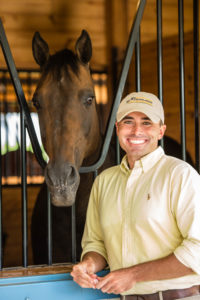
Hunter rider, trainer and U.S. Equestrian Federation ‘R’ judge Tom Brennan joined Tony Workman’s training business, Winter Hill Farm, in Hillsboro, Virginia, in 2004 as a groom and worked his way up to his current co-trainer position. Tom also serves on the U.S. Hunter Jumper Association’s Board of Directors, Hunter Working Group, International Hunter Derby Task Force and the Anti-Doping Task Force as well as the U.S. Equestrian Federation’s National Hunter Committee and National Breeds and Disciplines Council.
This year, Tom is excited to compete a talented string of horses, including Purple Heart who he has ridden to multiple major championships. Tom also plans to compete Buttoned Up and Canzonet in Green Hunter 3-foot-9, DJ in Green Conformation and Green Hunter 3-foot-6, Rappaport in Green Hunter 3-foot-3 as well as Callucci and Trump Card. Tom will also be riding new mounts Refined and Valentine. To learn more about Tom, go to www.PracticalHorsemanMag.com.
This article originally appeared in the March 2017 issue of Practical Horseman.





